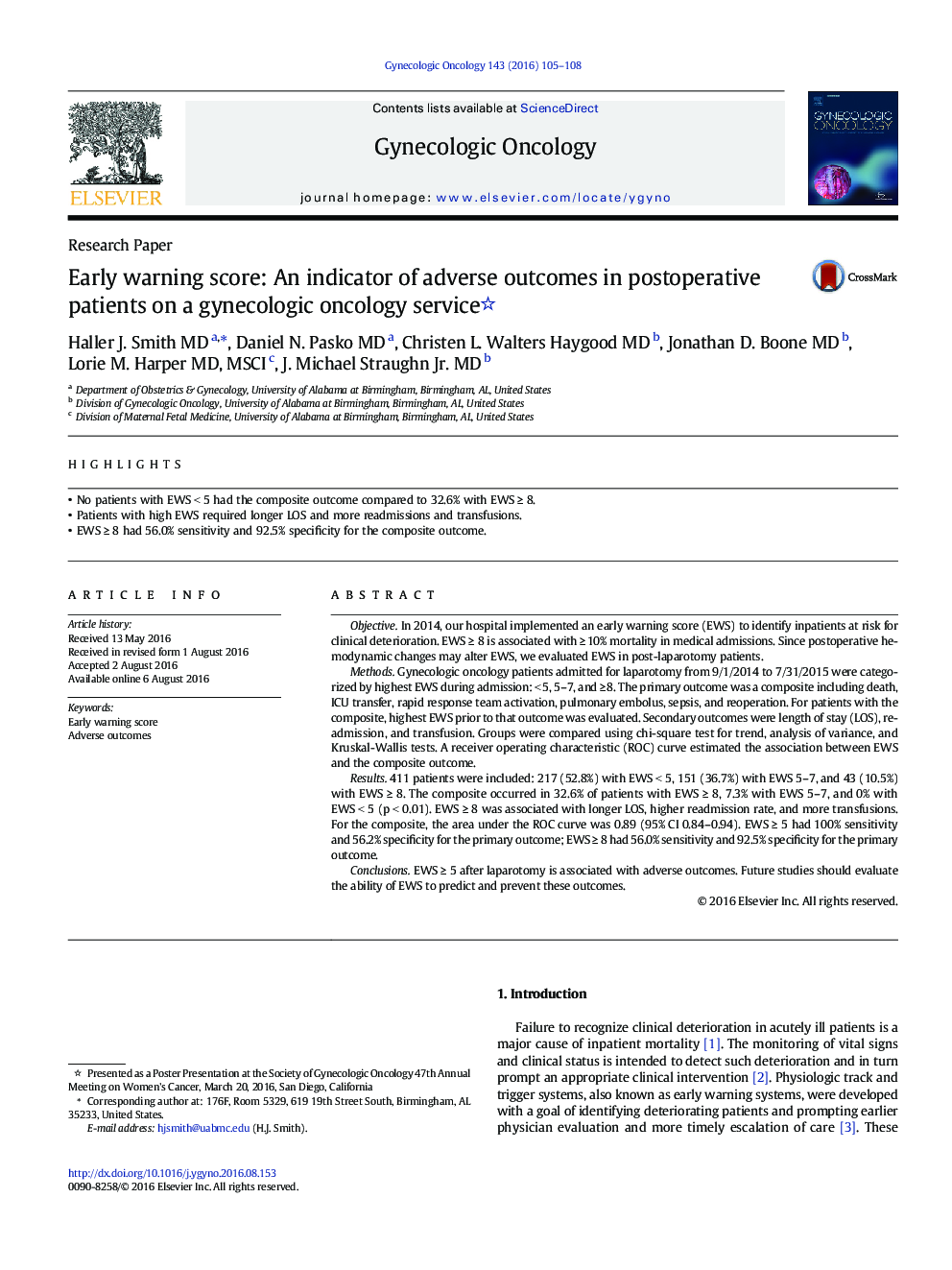| کد مقاله | کد نشریه | سال انتشار | مقاله انگلیسی | نسخه تمام متن |
|---|---|---|---|---|
| 3942416 | 1410079 | 2016 | 4 صفحه PDF | دانلود رایگان |
• No patients with EWS < 5 had the composite outcome compared to 32.6% with EWS ≥ 8.
• Patients with high EWS required longer LOS and more readmissions and transfusions.
• EWS ≥ 8 had 56.0% sensitivity and 92.5% specificity for the composite outcome.
ObjectiveIn 2014, our hospital implemented an early warning score (EWS) to identify inpatients at risk for clinical deterioration. EWS ≥ 8 is associated with ≥ 10% mortality in medical admissions. Since postoperative hemodynamic changes may alter EWS, we evaluated EWS in post-laparotomy patients.MethodsGynecologic oncology patients admitted for laparotomy from 9/1/2014 to 7/31/2015 were categorized by highest EWS during admission: < 5, 5–7, and ≥ 8. The primary outcome was a composite including death, ICU transfer, rapid response team activation, pulmonary embolus, sepsis, and reoperation. For patients with the composite, highest EWS prior to that outcome was evaluated. Secondary outcomes were length of stay (LOS), readmission, and transfusion. Groups were compared using chi-square test for trend, analysis of variance, and Kruskal-Wallis tests. A receiver operating characteristic (ROC) curve estimated the association between EWS and the composite outcome.Results411 patients were included: 217 (52.8%) with EWS < 5, 151 (36.7%) with EWS 5–7, and 43 (10.5%) with EWS ≥ 8. The composite occurred in 32.6% of patients with EWS ≥ 8, 7.3% with EWS 5–7, and 0% with EWS < 5 (p < 0.01). EWS ≥ 8 was associated with longer LOS, higher readmission rate, and more transfusions. For the composite, the area under the ROC curve was 0.89 (95% CI 0.84–0.94). EWS ≥ 5 had 100% sensitivity and 56.2% specificity for the primary outcome; EWS ≥ 8 had 56.0% sensitivity and 92.5% specificity for the primary outcome.ConclusionsEWS ≥ 5 after laparotomy is associated with adverse outcomes. Future studies should evaluate the ability of EWS to predict and prevent these outcomes.
Journal: Gynecologic Oncology - Volume 143, Issue 1, October 2016, Pages 105–108
